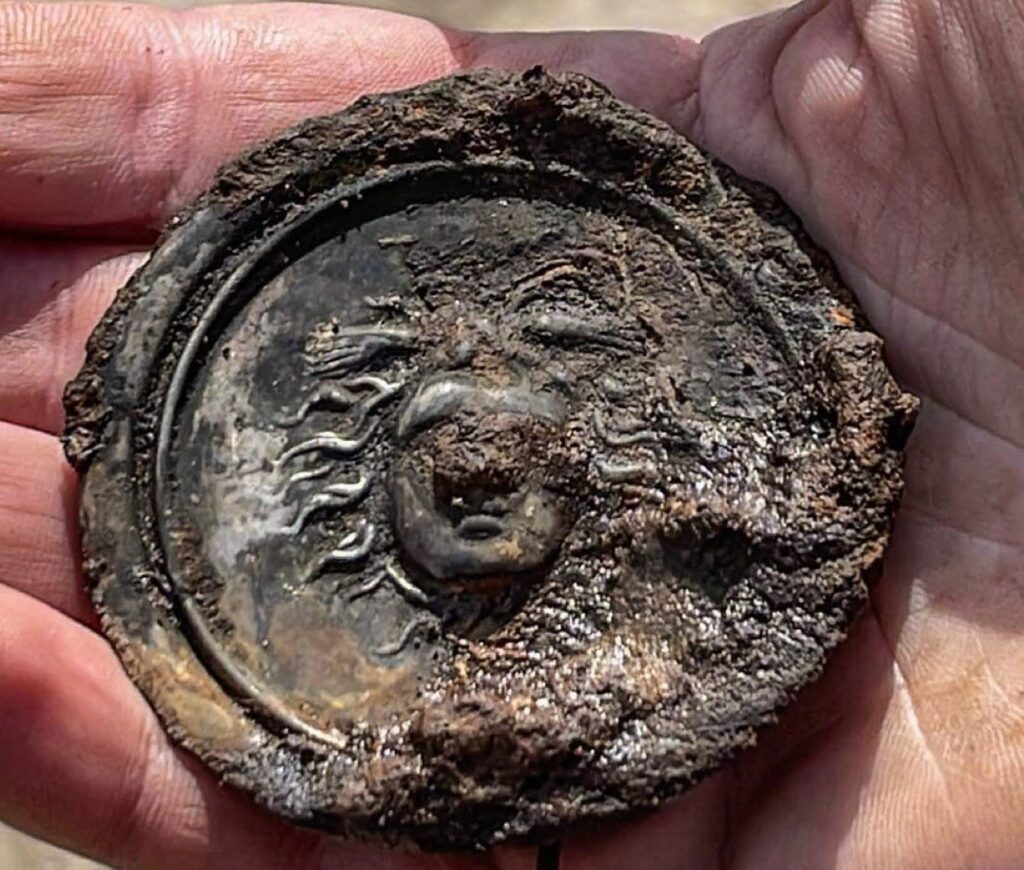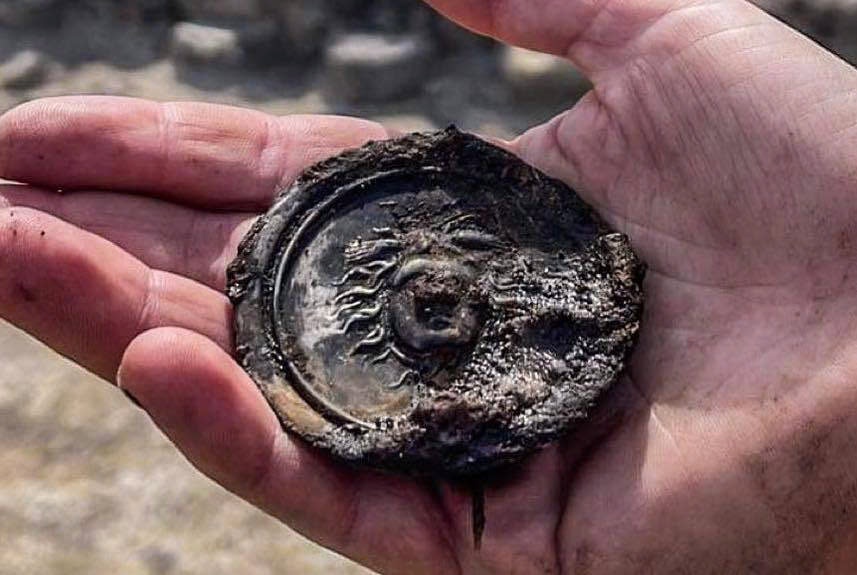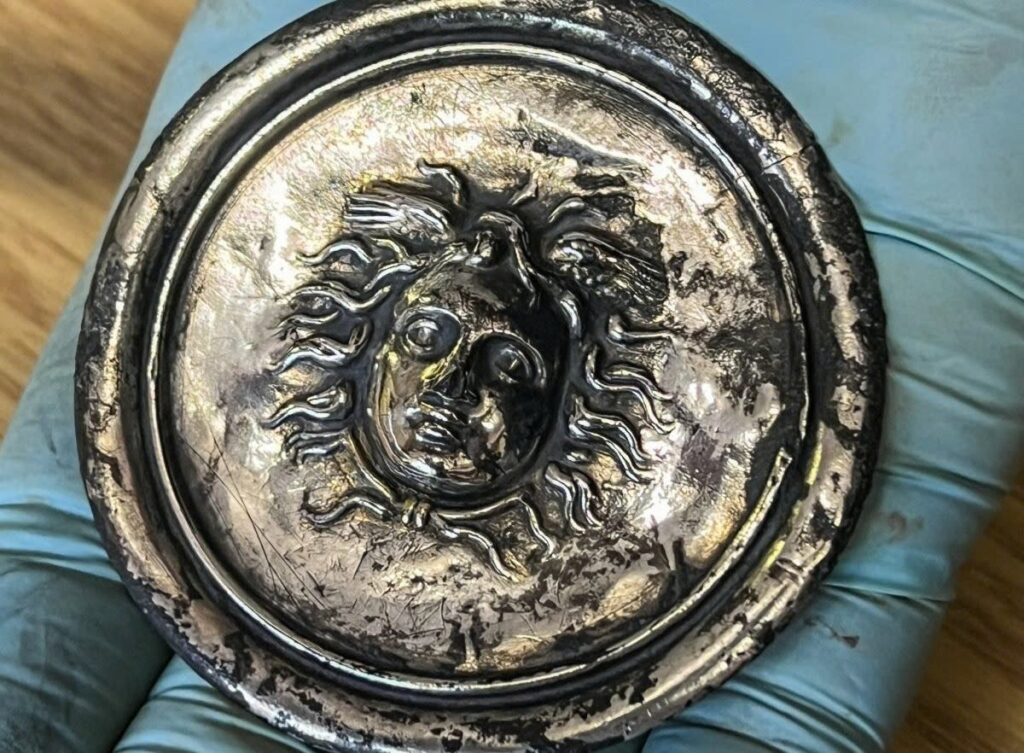Ancient Silver Phalera Discovered by Volunteer Archaeologists

Volunteer archaeologists have made a remarkable discovery at the Vindolanda Roman fort in northern England. A 1900-year-old silver military decoration, known as a phalera, has been unearthed, offering a glimpse into the Roman army’s prestigious award system.
The Significance of Vindolanda
Vindolanda, located just south of Hadrian’s Wall, stands as one of Europe’s most important Roman archaeological sites. This ancient fort complex, comprising nine successive forts built atop one another, once housed soldiers from across the Roman Empire, including those from Belgium, Germany, and France.
A Treasure Trove of Roman Artifacts

The silver phalera, found on the floor of a barracks building, features an intricately carved relief of Medusa’s head. In Roman military tradition, these decorative disks were worn on soldiers’ breastplates during parades, serving both as a mark of distinction and a protective symbol.
Other Notable Finds
This season’s excavations have yielded a variety of fascinating artifacts, including:
- A spearhead
- A copper alloy spoon
- A stamped mortarium rim
- Samian pottery
- A melon bead
- An enameled bow brooch
- A copper alloy scabbard chape
- A well-preserved wooden bath clog
The Ongoing Legacy of Vindolanda

Vindolanda continues to attract hundreds of volunteers from around the world for its annual excavations. The site offers a unique opportunity to explore Roman history, with its visible third-century stone fort, extramural settlement, and ongoing archaeological discoveries.
As excavations continue, Vindolanda promises to reveal more secrets of Roman Britain, providing invaluable insights into the lives of soldiers and civilians who once called this frontier outpost home.

